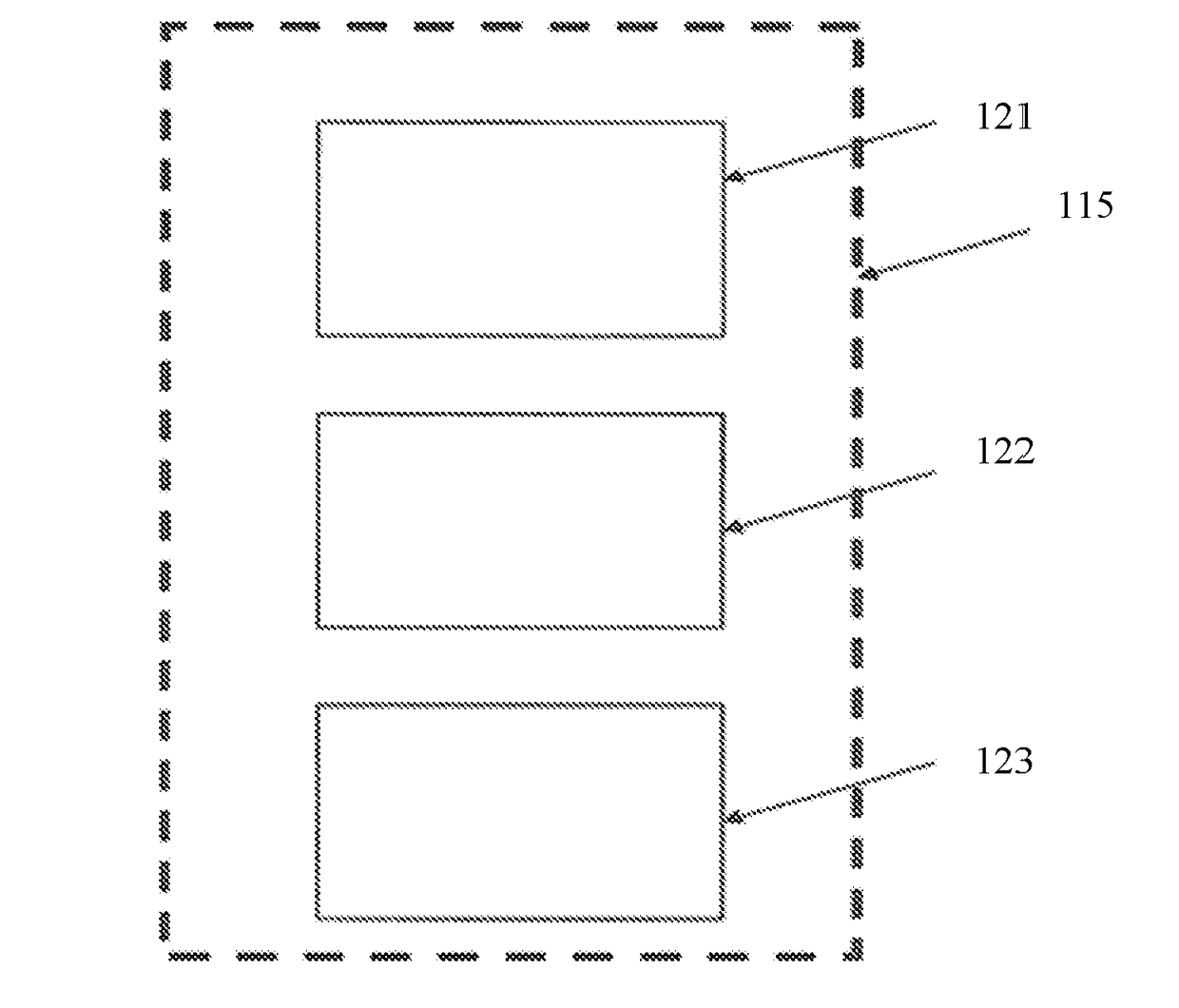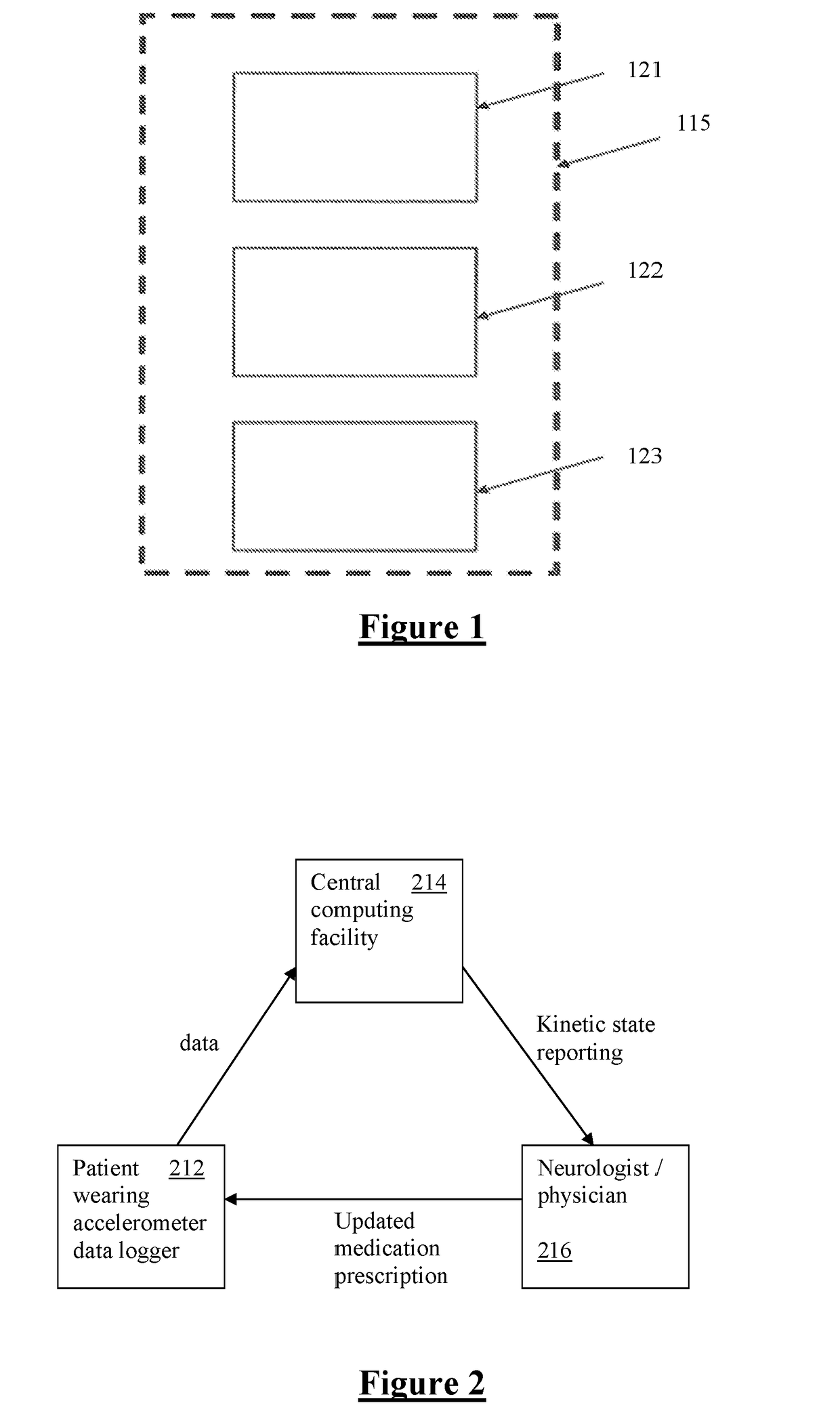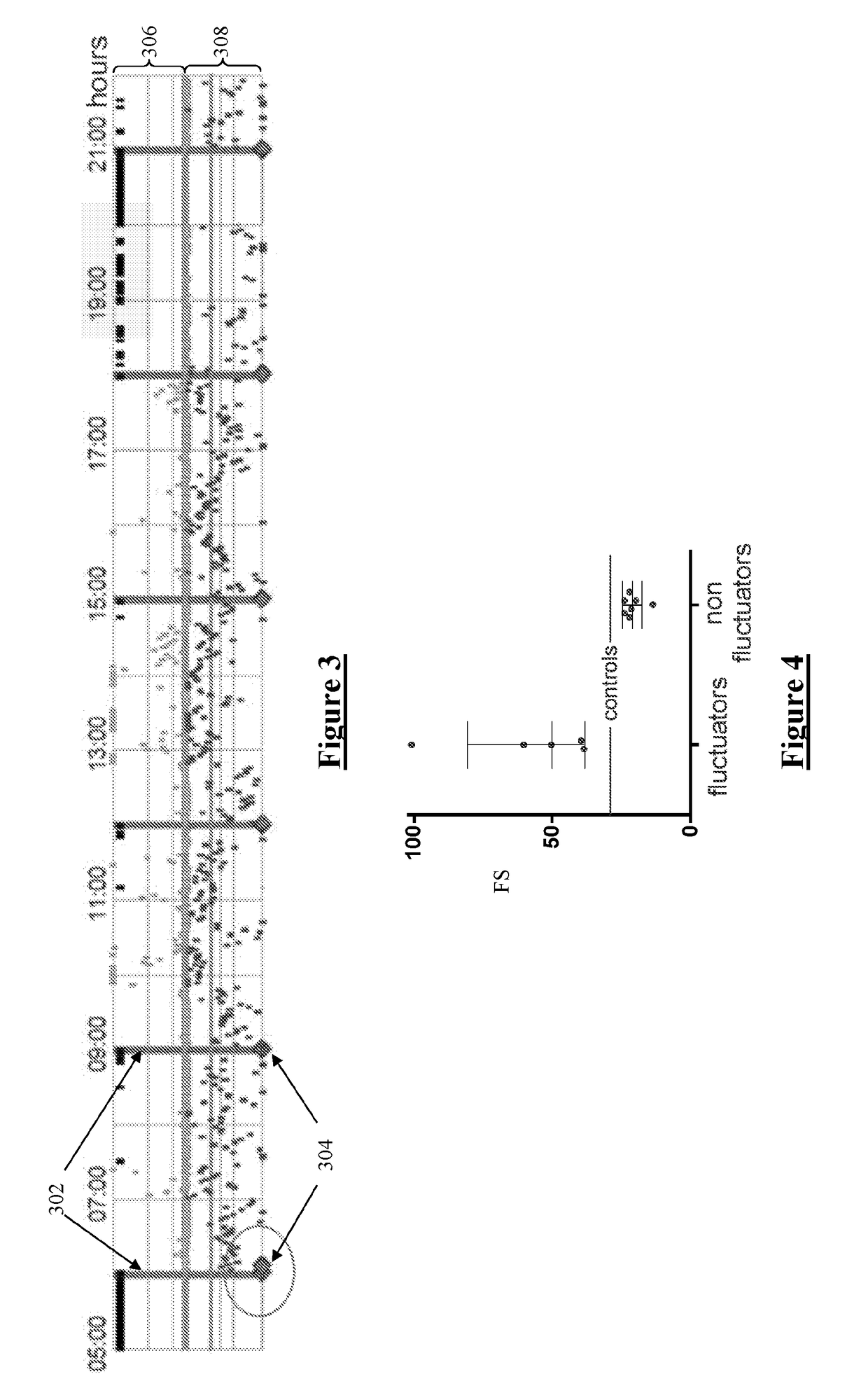Method and System for Assessing Motion Symptoms
a motion and symptom technology, applied in the field of motion symptoms assessment, can solve the problems of complicated attempts at assessing the kinetic state of the patient, and difficult for physicians to avoid prescribing, so as to achieve accurate patient screening, quantitative, simple, automatic
- Summary
- Abstract
- Description
- Claims
- Application Information
AI Technical Summary
Benefits of technology
Problems solved by technology
Method used
Image
Examples
Embodiment Construction
[0048]FIG. 1 is a diagrammatic view of a device for detection of various Parkinsonian or kinetic states in accordance with an embodiment of the invention. The device is wrist mounted which provides a sufficiently accurate representation of the kinetic state of the whole body. The device 115 comprises three elements for obtaining movement data of a limb of a person. The device 115 comprises a motion monitor 121 in the form of an accelerometer, an assessor 122 for recording and analysis of the received data in a manner that provides an objective determination of bradykinesia and dyskinesia, and an output means 123 for outputting objective determination of bradykinesia or dyskinesia over time periods so as to allow a clinician to prescribe medications or to allow the person to better understand their own kinetic state.
[0049]The device 115 is a light weight device which is intended to be worn on the most affected wrist of the person throughout waking hours. The device is mounted on an e...
PUM
 Login to View More
Login to View More Abstract
Description
Claims
Application Information
 Login to View More
Login to View More - R&D
- Intellectual Property
- Life Sciences
- Materials
- Tech Scout
- Unparalleled Data Quality
- Higher Quality Content
- 60% Fewer Hallucinations
Browse by: Latest US Patents, China's latest patents, Technical Efficacy Thesaurus, Application Domain, Technology Topic, Popular Technical Reports.
© 2025 PatSnap. All rights reserved.Legal|Privacy policy|Modern Slavery Act Transparency Statement|Sitemap|About US| Contact US: help@patsnap.com



